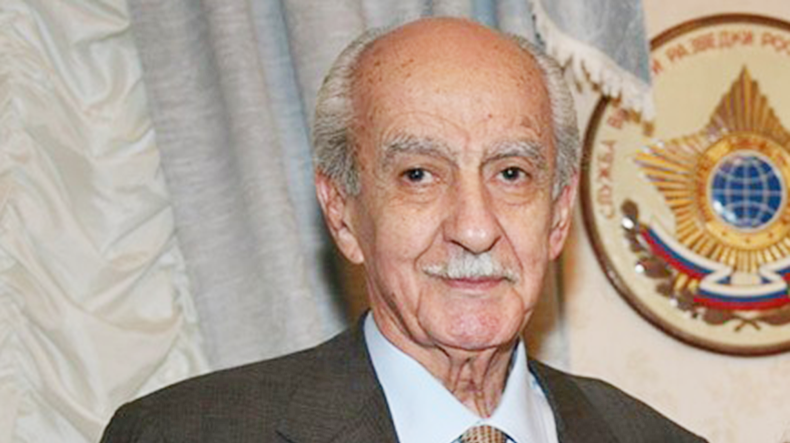
Today marks birth anniversary of legendary Soviet master spy Gevork Vartanian
February 17 marks the birth anniversary of Gevork Vartanian, a renowned Soviet intelligence agent, who helped thwart a Nazi plot to kill Allied leaders during World War II.
Gevork Varta nian was born on 17 February 1924 in the south Russian city of Rostov-on-Don, into Armenian parents. In 1930, his family moved to Tehran.
Vartanian was the son of an Iranian-Armenian Soviet intelligence agent who operated in Tehran for over two decades under the guise of a successful merchant. The young Vartanian’s spy career started early, when in 1940, at the age of 16, he received his first assignment and the codename Amir, The Armenia Weekly reported.
His wife, Gohar, was also a spy recruited by Vartanian. She worked alongside him for three decades. His work in intelligence continued until the early 90s. The Russian Foreign Intelligence Service revealed Vartanian’s identity only in 2000.
In the fall of 1943, at the age of 19, Vartanian prevented the Nazis from carrying out Operation Long Jump in Tehran. Approved by Hitler, and headed by Ernst Kaltenbrunner, the plot aimed to assassinate Stalin, Roosevelt, and Churchill.
Soviet intelligence agent Nikolai Kuznetsov first uncovered the plan when he posed as an army officer from Nazi-occupied Ukraine, and extracted information from German SS Hans Ulrich von Ortel, known for his drinking.
Vartanian and his group of like-minded youth – all around his age – were known as the “light cavalry.” They were known to travel quick, and light, often on their bicycles. Aside from Vartanian, the group was comprised of five Armenians, an Assyrian, and a Lezghin. Their task was to conduct surveillance work on Germans and possible Iranian agents. They were responsible for the arrests of around 400 Nazi agents.
On the eve of the Tehran Conference, Vartanian’s team located a group of six German radio operators who had parachuted in near the city of Qum, 40 miles south of Tehran. The “Light Cavalry” followed the Germans to Tehran, where they were in contact with the local German spy network, and maintained contact with Berlin. Vartanian and his team continued to monitor their communications, and it was revealed that the Germans were planning on sending in another group of operatives to carry out the assassination plot. The members of the first group of German operatives were arrested. According to Vartanian, they then allowed one of the German radio operators to contact Berlin with news of the foiled plan. The Germans decided against sending the second group in, and called off the operation.
In 1955, Vartanian graduated from the Institute of Foreign Languages in Yerevan. He was reportedly fluent in eight languages.
In 2003, Yuri Lvovich Kuznets published a book titled Tehran-43 or Operation Long Jump. The book drew from declassified documents and highlighted Vartanian’s part in the events. In 1981, the Soviet-French film “Tehran 43” was released, and featured French actor Alain Delon. However, much of Vartanian’s career remains a mystery, as most of his work remains classified.
Vartanian received the Gold Star medal of the “Hero of the Soviet Union” in 1984 for his intelligence work during World War II and the Cold War. He received three decorations after his 1943 success: the orders of the Great Patriotic War, the Battle Red Banner, and the Red Star. He was awarded the Order for Services to the Fatherland when he turned 80.
Gevork Vartanian died aged 87 on 10 January 2012.
Newsfeed
Videos






























